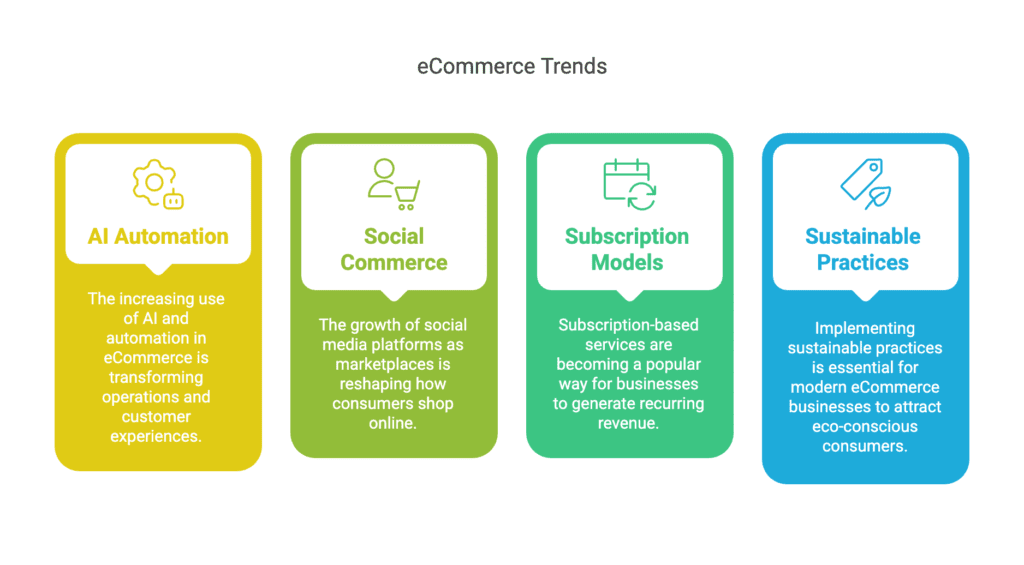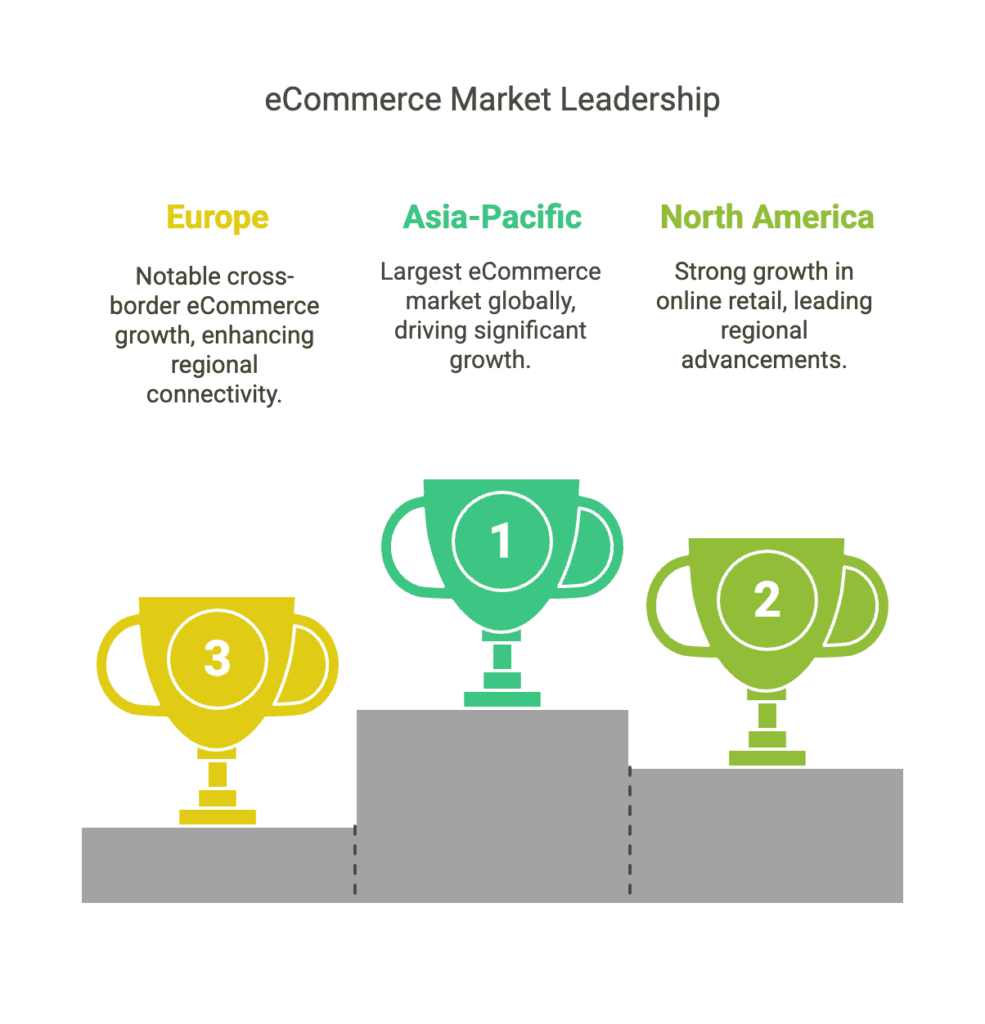The eCommerce industry is evolving at a rapid pace, fueled by technological advancements, shifting consumer behaviors, and digital transformation. Whether you’re a business owner, marketer, or investor, understanding eCommerce growth statistics can help you make informed decisions and stay ahead of the competition.
In this article, we’ll dive into the most recent eCommerce growth statistics, industry trends, and key factors driving online retail expansion.
Global eCommerce Growth Statistics
1. The Expanding eCommerce Market
According to recent reports, global eCommerce sales are projected to reach $6.3 trillion in 2024, a significant increase from previous years. By 2027, this figure is expected to surpass $8 trillion, highlighting the continuous upward trajectory of the industry (Statista).
2. Mobile Commerce Dominance
Mobile commerce (m-commerce) is growing rapidly, with 72% of eCommerce transactions expected to occur on mobile devices by the end of 2024. This trend underscores the importance of optimizing websites and checkout experiences for mobile users (Oberlo).
3. eCommerce Market Share in Retail
Online retail accounts for 22% of total global retail sales, and this figure is expected to rise as more consumers shift towards digital shopping. Countries like China, the US, and the UK continue to lead in eCommerce penetration (Forrester).
Key eCommerce Trends Driving Growth

4. Rise of AI and Automation
Artificial intelligence (AI) and automation are transforming eCommerce operations, from chatbots and personalized recommendations to inventory management and dynamic pricing. Businesses leveraging AI-driven tools, such as EasyData.io.vn, can enhance customer experience and improve conversion rates.
5. Social Commerce Expansion
Social commerce, where transactions occur directly on platforms like Instagram, TikTok, and Facebook, is expected to generate over $1.2 trillion in sales by 2025. Brands are increasingly integrating social media with eCommerce to reach new audiences and boost engagement (Insider Intelligence).
6. Subscription-Based Models
Subscription-based eCommerce is booming, with companies like Amazon Prime and Dollar Shave Club driving this trend. The subscription eCommerce market is projected to grow at a CAGR of 18% through 2026, highlighting the shift towards convenience-driven purchasing behaviors.
7. Sustainable eCommerce Practices
Sustainability is becoming a priority for online shoppers, with 73% of consumers preferring brands that use sustainable packaging and ethical sourcing. Businesses adopting eco-friendly practices are seeing increased customer loyalty and brand value (McKinsey).
Regional eCommerce Growth Insights

8. North America: Strong Growth in Online Retail
The US remains a global eCommerce leader, with online sales expected to exceed $1.3 trillion in 2024. The rise of direct-to-consumer (DTC) brands and marketplace dominance by Amazon continue to shape the landscape (eMarketer).
9. Asia-Pacific: The Largest eCommerce Market
The Asia-Pacific (APAC) region accounts for over 50% of global eCommerce sales, led by China, India, and Southeast Asia. The rapid adoption of digital payments and mobile shopping is fueling market expansion.
10. Europe: Cross-Border eCommerce Growth
European consumers are increasingly shopping across borders, with over 30% of eCommerce transactions occurring internationally. The EU’s regulatory landscape, including GDPR compliance, continues to shape digital retail strategies.
Strategies for Scaling Your eCommerce Business
To capitalize on the booming eCommerce industry, businesses must implement data-driven strategies. Here are some key recommendations:
- Optimize for Mobile: Ensure your website is mobile-friendly to cater to the growing number of m-commerce shoppers.
- Leverage AI and Analytics: Use AI-powered tools like EasyData.io.vn to analyze consumer behavior and personalize marketing efforts.
- Enhance Omnichannel Presence: Integrate online and offline shopping experiences to provide seamless customer journeys.
- Invest in Social Commerce: Utilize social media platforms for direct selling and engagement.
- Prioritize Customer Experience: Offer fast shipping, easy returns, and excellent customer support to build brand loyalty.

Conclusion
The eCommerce landscape is evolving, with new technologies and consumer behaviors shaping its future. By staying informed about eCommerce growth statistics and emerging trends, businesses can make strategic decisions to thrive in the competitive digital marketplace.
For more insights on data-driven eCommerce solutions, visit EasyData.io.vn.


Leave a Reply